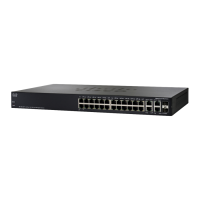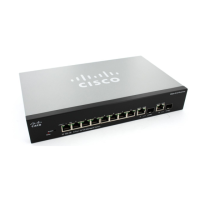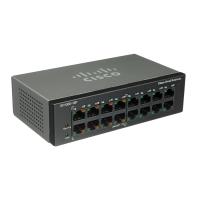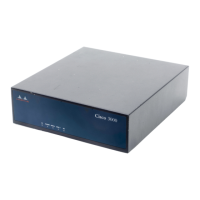Quality of Service
QoS Advanced Mode
507 Cisco Small Business 200, 300 and 500 Series Managed Switch Administration Guide (Internal Version)
25
Configuring Global Settings
The Global Settings page contains information for enabling Trust on the device.
Packets entering a QoS domain are classified at the edge of the QoS domain.
To define the Trust configuration:
STEP 1 Click Quality of Service > QoS Advanced Mode > Global Settings.
STEP 2 Select the Trust Mode while the device is in Advanced mode. If a packet CoS
level and DSCP tag are mapped to separate queues, the Trust mode determines
the queue to which the packet is assigned:
• CoS/802.1p—Traffic is mapped to queues based on the VPT field in the
VLAN tag, or based on the per-port default CoS/802.1p value (if there is no
VLAN tag on the incoming packet), the actual mapping of the VPT to queue
can be configured in the mapping CoS/802.1p to Queue page.
• DSCP—All IP traffic is mapped to queues based on the DSCP field in the IP
header. The actual mapping of the DSCP to queue can be configured in the
DSCP to Queue page. If traffic is not IP traffic, it is mapped to the best effort
queue.
• CoS/802.1p-DSCP—Select to use Trust CoS mode for non-IP traffic and
Trust DSCP for IP traffic.
STEP 3 Select the default Advanced mode QoS trust mode (either trusted or untrusted) for
interfaces in the Default Mode Status field. This provides basic QoS functionality
on Advanced QoS, so that you can trust CoS/DSCP on Advanced QoS by default
(without having to create a policy).
In QoS Advanced Mode, when the Default Mode Status is set to Not Trusted, the
default CoS values configured on the interface is ignored and all the traffic goes to
queue 1. See the Quality of Service > QoS Advanced Mode > Global Settings
page for details.
If you have a policy on an interface then the Default Mode is irrelevant, the action is
according to the policy configuration and unmatched traffic is dropped.
STEP 4 Select Override Ingress DSCP to override the original DSCP values in the
incoming packets with the new values according to the DSCP Override Table.
When Override Ingress DSCP is enabled, the device uses the new DSCP values
for egress queueing. It also replaces the original DSCP values in the packets with
the new DSCP values.
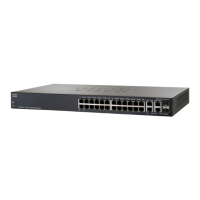
